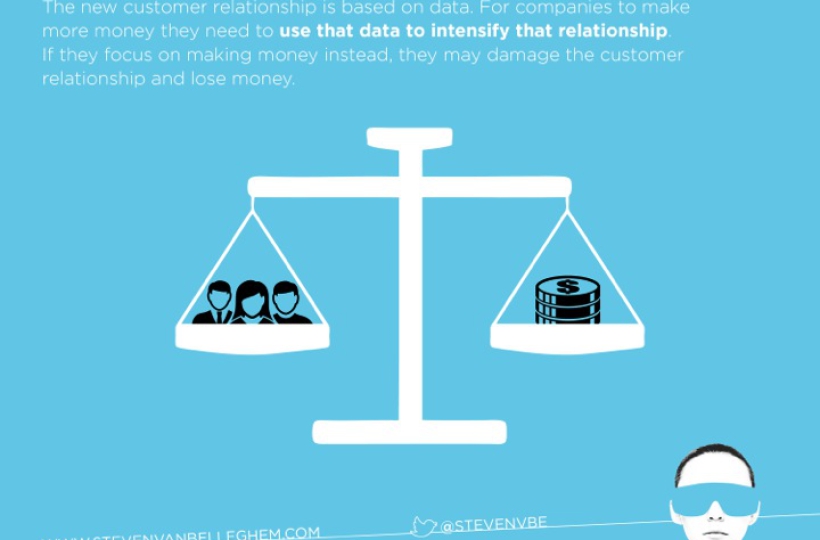The thin line between success and failure in using customer data

Customer first, without compromise
There is a simple business rule that’s easily forgotten, viz. ‘customer first without compromise’. If your Amazon order goes wrong or when the people at the McDrive forget your Big Mac, the problem is solved with no questions asked. This is a very powerful and simple approach but it is one that many companies seem to forget when there is a cost involved. When it comes to using big data, this rule is more crucial than ever. Data and privacy are such hot topics these days that a small mistake in this field can have big consequences.
“Big data = €” = Big danger
Lately I’ve been seeing a lot of board presentations that include a big data strategy. Most of those presentations have a slide that combines the words ‘big data’ with a dollar or euro sign. Honestly, those slides scare the s**t out of me.
There are two ways of buying into the big data thing and they resemble each other pretty closely:
– Using big data to make more money: My feeling is that this will lead to disappointed or frustrated clients instead of additional funds. In other words, this approach defeats the purpose.
– Using big data to improve the customer relationship: Use data to help clients faster and more efficiently. If you succeed, I am convinced you will make more money.
There’s a thin line between success and failure and the success of your approach hinges on the mindset you bring to the whole big data question. If you start to see dollar signs in your eyes then take a step back and focus on improving the customer relationship. It takes longer but ultimately it’s the only road to success.
Data to improve the customer relationship = BIG €
My research report ‘The self-service economy’ clearly shows that people accept the fact that companies use their data as long as this involves a direct return for the customer. Consumers love it when companies use customer data to increase efficiency and convenience during sales and after sales. They’re less enthusiastic when companies use data for advertising purposes but if those companies are not too pushy they will still accept it (if not, companies like Google and Facebook would be out of business).
If your company is able to upgrade the customer experience through big data, that customer’s loyalty and eagerness to buy your products will grow. Ultimately this may lead to big bucks or euros.
However, cross the thin line between the use and abuse of data and that data may become essentially worthless.
